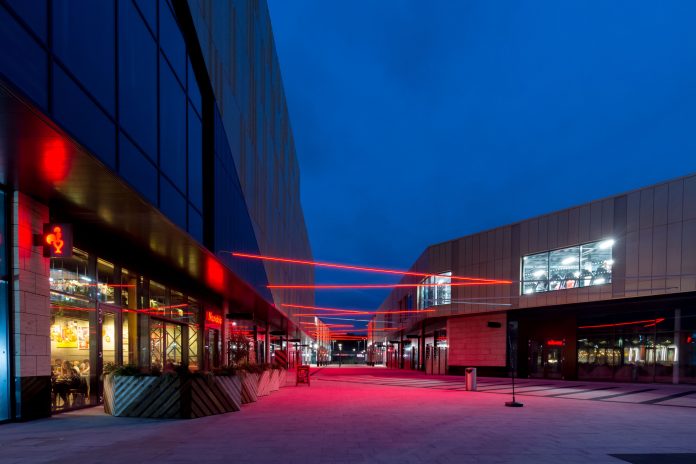Hitesh Pattni, northern specification manager at SFS, discusses how engaging product manufacturers in technical design advice during early work stages means project-specific solutions can be aligned with sustainable building
Our mission at SFS is to maximise the success of all collaborative projects – with safety and sustainable building at the very core.
How the construction industry do more to help the environment
Seeking technical design advice from product manufacturers during early work stages means project-specific solutions can be developed; and be aligned with the desired sustainable construction outcomes. It’s then possible to demonstrate to clients the value that a particular solution will provide; through long-term performance and lower whole-life energy and carbon emissions, for example.
The nature of the design advice can vary by project. It is likely to feature U-value calculations for the building envelope, giving a more accurate idea of wall thickness. It might also feature Environmental Product Declarations (EPDs), which can be used to help calculate a project’s overall environmental impact.
How can the industry achieve better results?
Nowhere is the environmental impact of human activity more evident than in the construction industry and what the construction sector contributes. In the UK alone, the sector uses around 400m tonnes of materials every year.
Around a quarter of that becomes waste, despite dwindling supplies of finite raw materials. And yet, as global populations continue to grow and become more urbanised, the worldwide demand for raw materials will increase.
How do we reconcile our ongoing need for buildings with the environmental impact that construction activity has on the planet? Robust building envelope specifications are required – which not only aim to meet the needs of ‘now’ but also help to ensure the building makes a constructive contribution to the planet for a positive future.
Efficiency is essential. That does not just mean the thermal efficiency of the building envelope. The concept of efficiency can be applied at any and all stages of a project.
It starts from the outset by asking whether new construction is necessary or can a client’s needs be met using an existing asset. If a new building is required, how can it be designed to use resources efficiently and to reduce, or even eliminate, waste? How can it be delivered efficiently on-site?
The importance of whole life of products and buildings
Being clear about what sustainable building means in the construction industry or on a construction project is easier said than done. There are many contrasting opinions and conflicting sources of advice. It is challenging to specify products that lower the operational emissions of a building, even before thinking about raw material sourcing, in-use maintenance and repair, and what will happen to the building at the end of its life.
Manufacturers are keen to promote the sustainability benefits of their products, but a robust specification is one that uses materials because they support the long-term goals of the project and not just because they claim to be ‘low carbon’ or contain a lot of recycled content.
Awareness around embodied carbon is increasing within the construction industry, and it is likely to become legislated in the near future. Reductions in embodied carbon can mean a project is using resources more efficiently simply by using less of them.
In the context of the linear economy, however, where materials and products are still routinely disposed of at the end of their life, is embodied carbon the right long-term metric?
By looking at materials and products in terms of their whole-life impact, we can start to shift the construction industry towards a circular economy approach.
The availability of Environmental Product Declarations (EPDs) supports this. When manufacturers can supply EPDs that report on all lifecycle impacts, specifiers are better placed to make all-embracing informed decisions. Metals such as steel and aluminum have high embodied carbon, but we can think about how to design with them in a way that takes advantage of their strength and durability.
Designing components for reuse means that when a building reaches the end of its useful life, it can be disassembled, and the components used on a new site. Demand for raw materials and new products is reduced. And even though these metals are infinitely recyclable, the environmental impact associated with the recycling process is avoided too.
How to start thinking of sustainability as more than carbon dioxide emissions
Switching to a longer-term frame of reference means having information available to understand products in a different way. That is a key area in which specifiers and manufacturers can work together, and the collaborations are most effective when they happen in the early stages of a project.
It becomes possible to know more about where raw materials are sourced from and how far they have traveled to be made into a construction product and then delivered to the site. It means understanding how components perform in use and how they contribute to the overall performance of the building. It means knowing how a product can be handled at the end of the building’s life.
Current building regulations do not include requirements for these aspects of building design and specification. The focus remains on the operational efficiency of buildings. Important as that is, there is a lot more to sustainability. The transition away from fossil fuels means designing buildings with high levels of building fabric performance and efficiency specified renewable technology.
Engaging with manufacturers means specifiers can work to design a building envelope that is capable of incorporating renewable as part of the system, thereby achieving long-term sustainability.
You can learn more about robust, sustainable building envelope specifications and the benefits of engaging with product manufacturers in our series of technical papers in ‘SFS Talks’ here: https://uk.sfs.com/knowledge-hub/sfs-talks
Find out more about how SFS UK is working to reduce waste, be more energy efficient, and create a more sustainable future for all by visiting our sustainability page here.

For more information on Defining Robust Specifications, go to our Whitepaper: https://uk.sfs.com/knowledge-hub/sfs-talks/specifications/planning
For further information, call 0330 0555888 or visit https://uk.sfs.com/

















